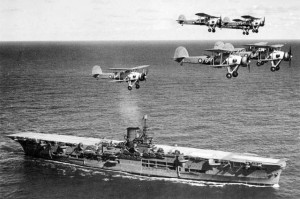 The history of the British Royal Navy goes back more than a thousand years to King Alfred’s first sea battle in 882. In 1660, the Kingdom of England created a national naval force after King Charles II was restored to the throne. In 1707, England’s naval force merged with the smaller Royal Scots Navy after England and Scotland joined together to form the Kingdom of Great Britain. The two had actually begun operating together from the time of the Union of the Crowns in 1603.
The history of the British Royal Navy goes back more than a thousand years to King Alfred’s first sea battle in 882. In 1660, the Kingdom of England created a national naval force after King Charles II was restored to the throne. In 1707, England’s naval force merged with the smaller Royal Scots Navy after England and Scotland joined together to form the Kingdom of Great Britain. The two had actually begun operating together from the time of the Union of the Crowns in 1603.
The Beginning of World War II
At the beginning of World War II, the British Royal Navy had a smaller fleet as a result of the World War I treaties. Great Britain had many global commitments and their first task was to protect the country’s trade. The country was very much dependent upon food imports and raw materials. The Royal Navy’s resources were allocated around the world between several fleets and stations.
Soon after the war started they supplied critical protection for British evacuation operations from Norway. During this evacuation six destroyers and an aircraft carrier were lost, but over 300,000 men were saved. Later on, at Dunkirk, 7,000 British Royal Navy men were killed.
First Naval Battles
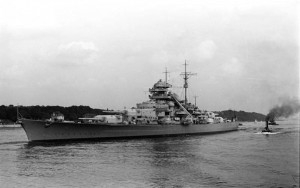 In another operation by the Royal Navy, Admiral Cunningham faced many dangers while trying to remove the British Army and ended up saving countless men. In May of 1941, the Royal Navy suffered severely when the Hood battle cruiser was sunk by the Germany’s battleship Bismarck. The British Royal Navy destroyed the Bismarck a few days later, but they were still seriously impacted by the loss of the Hood. In December of 1941, they Royal Navy lost both the Repulse and Prince of Wales when Japan attacked them.
In another operation by the Royal Navy, Admiral Cunningham faced many dangers while trying to remove the British Army and ended up saving countless men. In May of 1941, the Royal Navy suffered severely when the Hood battle cruiser was sunk by the Germany’s battleship Bismarck. The British Royal Navy destroyed the Bismarck a few days later, but they were still seriously impacted by the loss of the Hood. In December of 1941, they Royal Navy lost both the Repulse and Prince of Wales when Japan attacked them.
The British Royal Navy attack on Oran in Algeria was against the French Naval Mediterranean Fleet. Several torpedo bombers sank three Italian battleships near Taranto. During March of 1941, they sank three cruisers and two destroyers near Cape Matapan. The Royal Navy conducted the evacuation of soldiers from Greece and took them to Crete. In this the naval operation, they lost three cruisers and six destroyers but also saved 30,000 men.
Protecting Sea Lanes and Ports
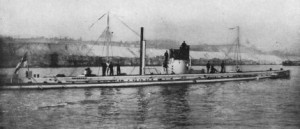 This British guarded the sea lanes so other British forces could fight in distant areas around the world including the Mediterranean, the Far East and North Africa. Convoys were also used at the beginning of the war, along with anti-submarine patrols. Starting in 1942, the responsibility for protecting various Atlantic convoys had been divided up between the different allied navies. At this time, the Royal Navy was responsible for protecting the Arctic and North Atlantic oceans. German U-boat threats were considered top priority in order to prevent any attacks on northern Europe. It was necessary to stop the U-boats so troops could be resupplied and transported. During this time period they were able to acquire many different types of escort vessels.
This British guarded the sea lanes so other British forces could fight in distant areas around the world including the Mediterranean, the Far East and North Africa. Convoys were also used at the beginning of the war, along with anti-submarine patrols. Starting in 1942, the responsibility for protecting various Atlantic convoys had been divided up between the different allied navies. At this time, the Royal Navy was responsible for protecting the Arctic and North Atlantic oceans. German U-boat threats were considered top priority in order to prevent any attacks on northern Europe. It was necessary to stop the U-boats so troops could be resupplied and transported. During this time period they were able to acquire many different types of escort vessels.
Defending the ports and harbors of the allies, along with keeping the sea-lanes open around coastal areas, was the duty of the patrol service and coastal forces in the Royal Naval. Naval supremacy was fundamental for many amphibious operations that were conducted, including the invasion of Sicily, Italy, Normandy and Northwest Africa. For the important Operation Neptune, the Royal Navy and the Royal Canadian Navy provided over nine hundred of the twelve hundred warships and about seventy-five percent of the four thousand landing craft. The Mulberry harbors made it possible to keep the invasion forces supplied.
United States Enters the War
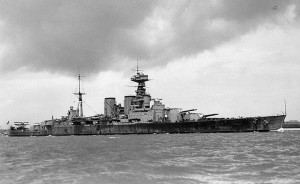 After World War II started, it quickly became apparent that new aircraft carriers were going to be an important part of naval warfare, which meant Britain’s battleships were becoming less significant. During this time, Great Britain was an innovator in designing aircraft carriers and they also introduced armored flight decks to replace vulnerable battleships. When the United States entered the war their naval force dwarfed the Royal Navy force. The successful allied invasion of France reduced the need for the British Royal Navy to escort convoys and to provide fire support for fighting troops near the coastal regions, such as the Scheldt battle near Walcheren.
After World War II started, it quickly became apparent that new aircraft carriers were going to be an important part of naval warfare, which meant Britain’s battleships were becoming less significant. During this time, Great Britain was an innovator in designing aircraft carriers and they also introduced armored flight decks to replace vulnerable battleships. When the United States entered the war their naval force dwarfed the Royal Navy force. The successful allied invasion of France reduced the need for the British Royal Navy to escort convoys and to provide fire support for fighting troops near the coastal regions, such as the Scheldt battle near Walcheren.
The British Royal Navy Eastern Fleet had to withdraw from the Indian Ocean because of Japan’s incursions. After that, the Royal Navy sent large forces to the Pacific.This operation required different techniques that needed a significant support fleet that could resupply at sea. They also concentrated on naval defense and air power. In 1945, eighty-four support vessels and warships went to the Pacific. This was the foreign deployment for the Royal Navy. One of their largest attacks was on Sumatra’s oil refineries so Japan would not have access to it. The Royal Navy also gave important support for the U.S. troop landings on Okinawa. They also conducted air attacks and bombing attacks on the Japanese mainland.
End of World War II
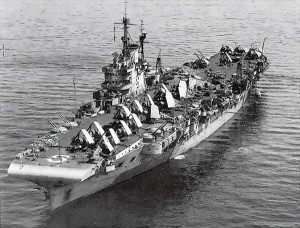 At the beginning of World War II, the Royal Navy had 19 battleships and 80 cruisers. 50 older destroyers, along with other smaller crafts, were acquired from America in exchange for various naval bases. When World War II ended, the Royal Navy had 16 battleships, 50 carriers, 62 cruisers, nearly 200 destroyers, 131 submarines and also 9,000 other ships. Throughout the war they lost three hundred and fifty major warships and over one thousand smaller ships. At the beginning of the war there were 134,000 men in the Royal Navy and by the end of the war over 800,000 men were part of the navy. Over 50,000 sailors died in the war. The Royal Marines had about 80,000 men in 1945, and they took part in all of the important landings.
At the beginning of World War II, the Royal Navy had 19 battleships and 80 cruisers. 50 older destroyers, along with other smaller crafts, were acquired from America in exchange for various naval bases. When World War II ended, the Royal Navy had 16 battleships, 50 carriers, 62 cruisers, nearly 200 destroyers, 131 submarines and also 9,000 other ships. Throughout the war they lost three hundred and fifty major warships and over one thousand smaller ships. At the beginning of the war there were 134,000 men in the Royal Navy and by the end of the war over 800,000 men were part of the navy. Over 50,000 sailors died in the war. The Royal Marines had about 80,000 men in 1945, and they took part in all of the important landings.
The Royal Navy defended Great Britain from invasion, fought enemies and also established the nation as the most dominant sea power during the nineteenth century. Today, the role of the British Royal Navy involves peacekeeping, as well as fighting drug trafficking and piracy. The story of the Royal Navy is an important part of the Great Britain’s history. The Royal Navy has a museum located in Portsmouth, England and is one of Great Britain’s oldest and most well-known maritime museums.